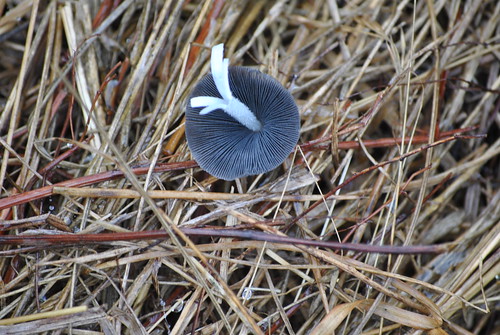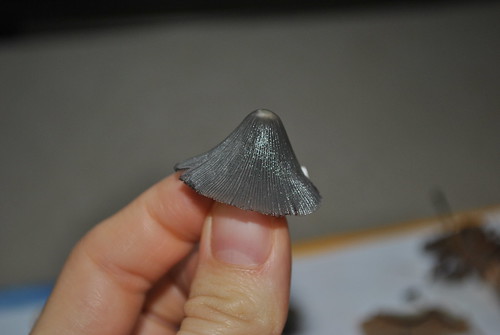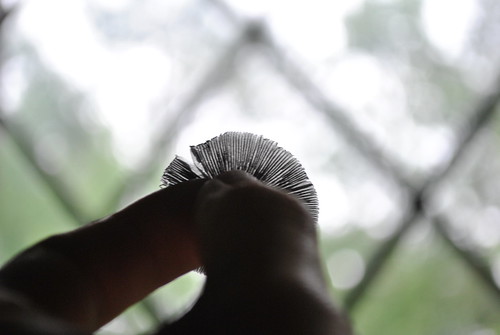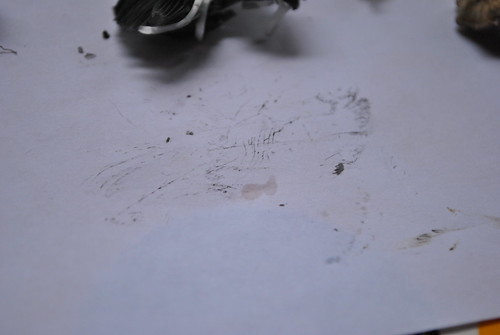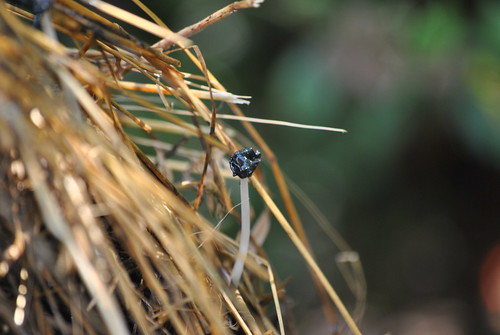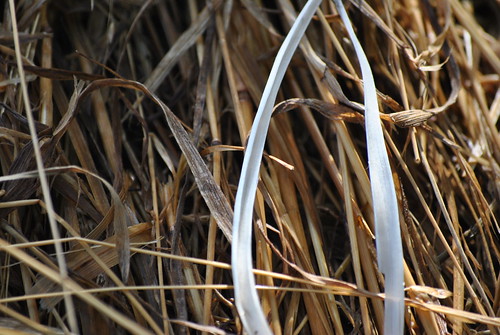In my search for inky cap information, I also found a wonderful blog from the Pyrenees: http://www.stammer.nl/natureswitchedon/
It's about coexisting with nature harmoniously, featuring lovely photography and progress updates.
I am currently trying to identify more mushroom specimens I collected from the woods a few days ago. I feel that after all the frequent showers the land has received over the past few days, I should make time to do more hunting. This is a vast universe which constantly amazes me, and I always have trouble finding time for everything I'd like to do.
I feel confident in positively identifying the Trichaptum biforme due to its distinctive purple coloring. It may not have any interesting uses as far as humans are concerned, but I find it very beautiful.
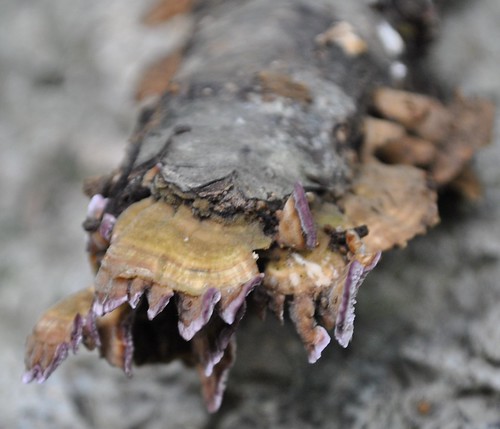
caps (topside)

It has pores rather than gills. (underside)
The color is much more vibrant in person. The particular lighting conditions dulled the hue in the photographs a bit. They grow from decaying wood with no discernible stems. Mushrooms such as this are called Polypores, or commonly called shelf mushrooms. Here is a page which highly praises the Polypore: http://www.wildmanstevebrill.com/Mushrooms.Folder/Polypore.html
"Wildman" Steve Brill's website certainly has a lot to offer in regards to discovering nature and foraging.

